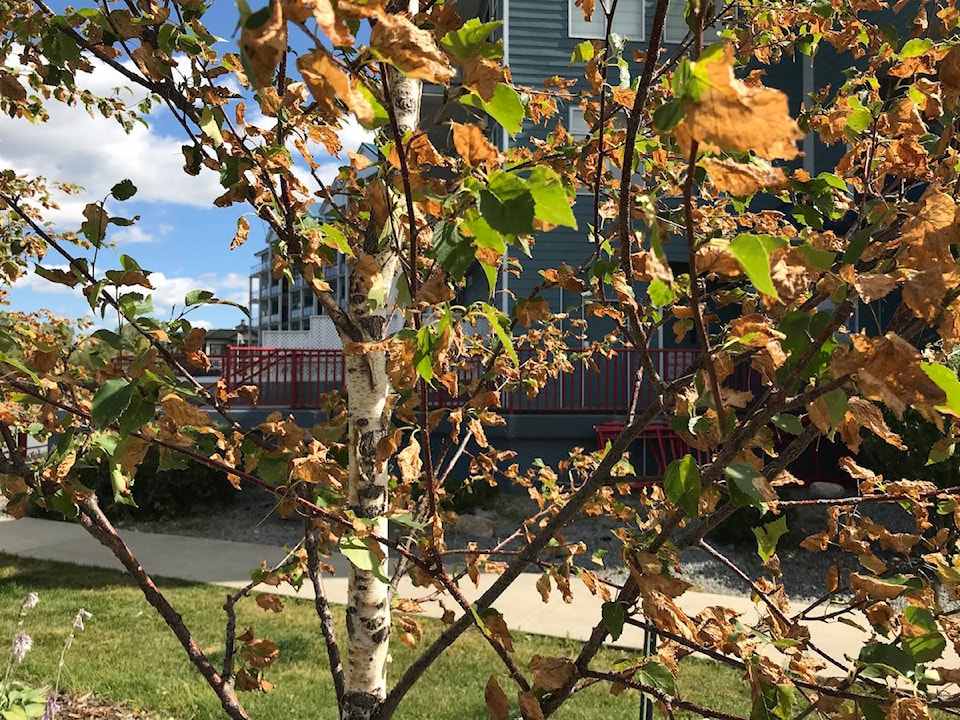Yellowing tree leaves and nighttime frost warnings indicate this August is falling short of temperature expectations.
But public complaints about a cooler, wetter summer than usual aren’t stacking up against Environment Canada’s weather data.
Meteorologist Kyle Fougere said precipitation levels are actually lower than they should be.
This month received only about half of the August average of 69 millimetres, he added, while hourly temperatures are only a tad lower than average.
He believes the public “perception” of poor weather can be blamed on one main factor — the lack of a strong ridge of high pressure that generates a sustained period of warmth.
Fougere admitted central Alberta has seen very changeable atmospheric conditions, without the three-to-five-day periods of hot weather that prompt people to drive to the lake.
While many late afternoons have seen an hour or two of heat, clouds have generally moved in or the wind has picked up by evening. And drizzle has dampened the public mood.
Fougere said a bit of rain was stretched out over multiple days this month, instead of having the more usual rainstorms that drop bucket loads of water in a short period.
People’s perceptions aren’t the only things being messed with — some trees are reacting as if there’s been a lot of rain, with leaves that are yellowing, spotting or prematurely falling off.
Horticulturalist Christine Cornelius of Parkland Nurseries and Garden Centre, has an explanation: since it showers often and sun has been scarce, many precipitation-sensitive fruit and willow trees have been sitting in wet conditions — and they “adapt” by shedding their leaves.
Customers have been calling with concerns about spotted leaves. Some have brought in samples for a diagnosis.
Cornelius said she tells them, “Mother Nature gives us what she gives us,” and trees usually acclimatize to the new conditions.
Overnight frost settled on Red Deer and Rocky Mountain House on Tuesday night, but that isn’t out of the ordinary for the end of this month, said Fougere.
Cornelius said frost might even help root vegetables by “knocking over” their tops and allowing most of the grown energy to focus on what’s below ground.
But most flowers, leafy garden vegetables and peas are more susceptible, and should be covered if the overnight forecast is a few degrees above zero, she added.
Some customers have been purchasing plant coverings, but throwing blankets or towels over plants that can’t be brought indoors will also prevent damage from light frosts.
